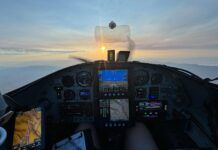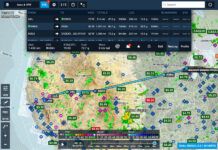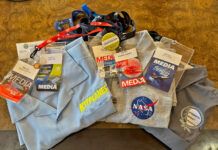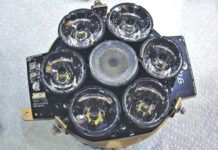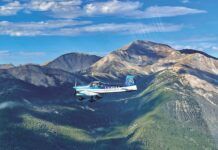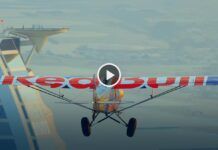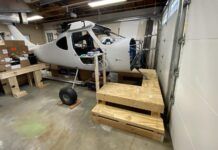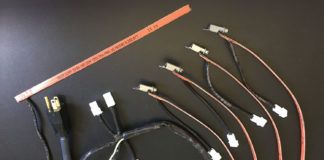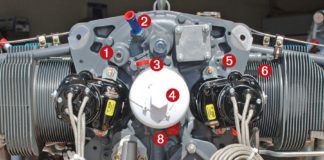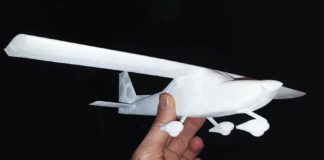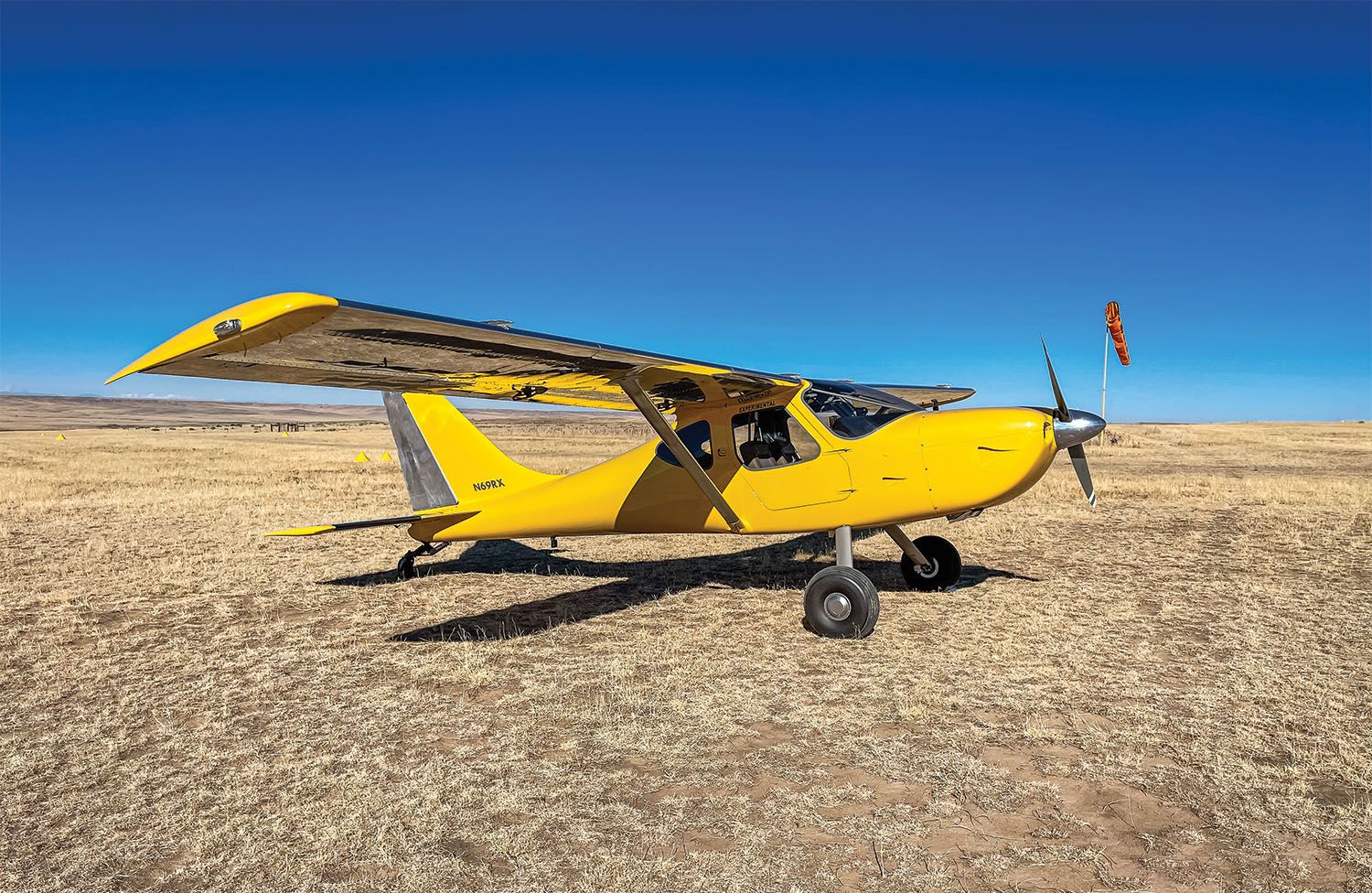 A recent wave of cooler weather afforded myself and my partner Eric the chance to venture into Colorado’s majestic mountains for the first time with Woodstock, our GlaStar. My first adventure was a solo sortie to grab breakfast at Harriet Alexander Field (ANK) in Salida, Colorado. The airport sits in the same valley as the infamous Leadville, just a bit farther down and 2400 feet lower in elevation. I was flying to meet with my friend Bill who had handily beat me there in his Skywagon. Woodstock climbed happily. I noted 400–500 feet per minute through 11,500 msl. Winds were light, but I suspect I found a gentle updraft as I crossed the foothills. I was level at 12,500 as I approached Trout Creek Pass. It was the highest I had ever flown Woodstock and I was giddy with joy! (Or was that the hypoxia?) The flight down the valley and landing at ANK was beautiful and uneventful. While I was scarfing down my old-fashioned breakfast, however, my mind was secretly wondering how well the takeoff would go.
A recent wave of cooler weather afforded myself and my partner Eric the chance to venture into Colorado’s majestic mountains for the first time with Woodstock, our GlaStar. My first adventure was a solo sortie to grab breakfast at Harriet Alexander Field (ANK) in Salida, Colorado. The airport sits in the same valley as the infamous Leadville, just a bit farther down and 2400 feet lower in elevation. I was flying to meet with my friend Bill who had handily beat me there in his Skywagon. Woodstock climbed happily. I noted 400–500 feet per minute through 11,500 msl. Winds were light, but I suspect I found a gentle updraft as I crossed the foothills. I was level at 12,500 as I approached Trout Creek Pass. It was the highest I had ever flown Woodstock and I was giddy with joy! (Or was that the hypoxia?) The flight down the valley and landing at ANK was beautiful and uneventful. While I was scarfing down my old-fashioned breakfast, however, my mind was secretly wondering how well the takeoff would go.
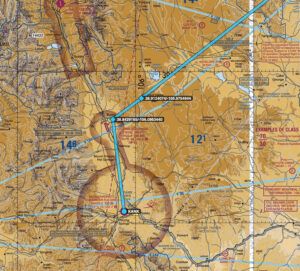
I planned for the worst: a takeoff into the wind on Runway 06 with an immediate right turn down the valley into lower terrain. I did a static short-field takeoff; Woody’s tail was up in a matter of seconds, and we were in the air shortly after. Bill was holding short in his Skywagon behind me and called, “Nice! Looking good!” over the CTAF. I don’t think either of us expected Woody to do so well. Climb performance was great, so I ditched the backup plan of turning right down the valley and flew in the left-hand traffic pattern instead, waiting for Bill to catch up.
Bill and I flew in formation for most of the way back—until he had his fill, and I watched as he dusted me off my left-hand side, returning to normal Skywagon speed. Back over the hot plains of my home airport on the front range, I noticed my airspeed began to fog over. That’s new, I thought. I assumed it was caused by the sudden change of temperature and swift descent from cold mountains to hot plains under the Denver Class B. I called a few knowledgeable friends afterward and was told the fog was a result of a broken seal in the indicator. Oh, yay. Airplanes. Always something to fix, I thought. Little did I realize a broken airspeed seal is a great reason to ground an airplane!
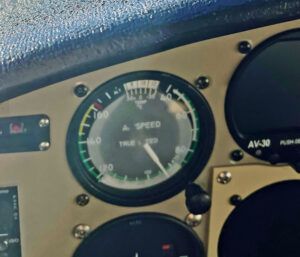
The next flight was a routine trip up to Denver’s Rocky Mountain Metropolitan Airport (KBJC) and back with Eric, during which the needle froze at 94 KIAS. Dang! I was really glad the uAvionix AV-30-E provided us with a reliable backup display. Once home, I pulled the airspeed indicator and took it to a local overhaul shop.
The shop did a great job and had the airspeed indicator back in three days with a very detailed work order and fresh FAA 8130-3. The work order stated the indicator was tarnished, dirty and reading slow when it arrived at the shop. Reading slow, eh? I was curious to know just how much. Since my top AV-30-E was trimmed to match the gauge prior to overhaul, I did a test flight to note the discrepancy between old and new. It turns out that the old gauge was reading 4–5 knots slow! Sure enough, when I went to retrim the AV-30-E it was already set to read -5 knots. It was dead accurate from the factory all along. Kudos to the manufacturer, uAvionix. I did several sets of stalls to reverify the stall speed on the steam gauge. I also went into a local grass strip and found that my short-field capabilities instantly improved, now that I was no longer blazing down on final doing 5 knots faster than indicated. It was actually there I shut down to retrim the AV-30-E.
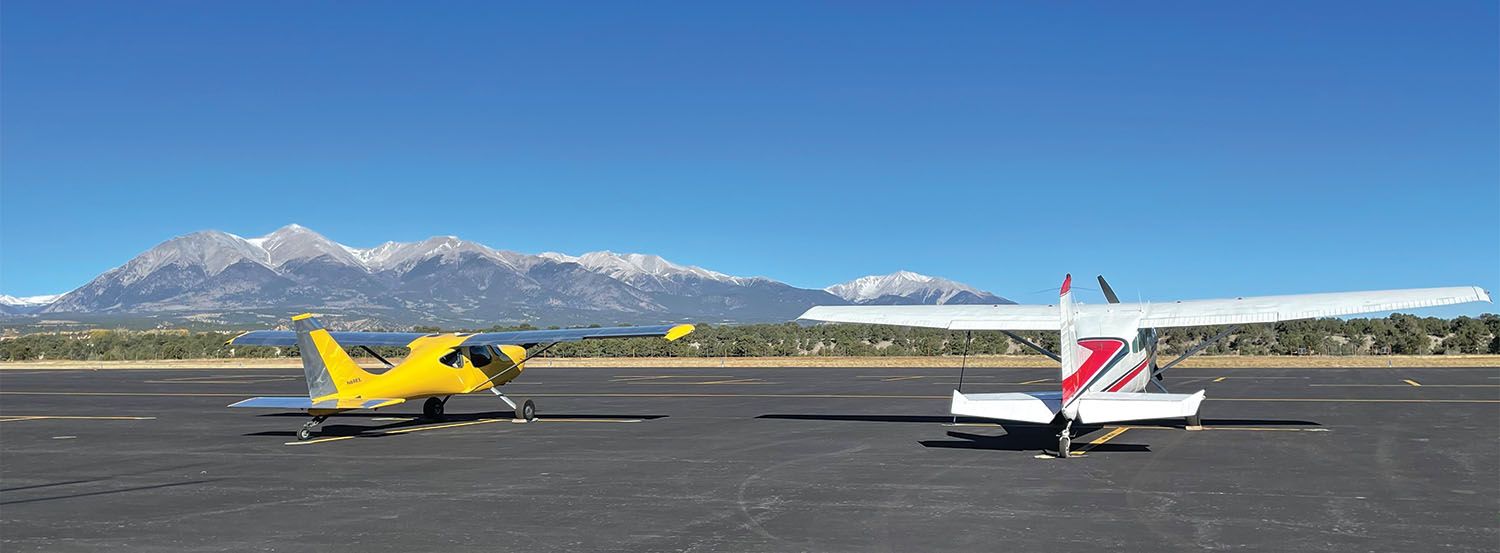
Eric’s Turn
A few days later, with a fresh airspeed indicator and full tank of gas, Woodstock and I ventured into the mountains once more, this time with my partner Eric at the controls. We flew around the west side of Pikes Peak. Once again, we passed through Trout Creek Pass with plans to land at Central Colorado Regional (AEJ) in Buena Vista, Colorado. (One airport up the valley closer to Leadville!) On this particular day it was calm but warm. It was hard to be concerned about performance on such a smooth day with a down-sloping 8300-foot runway pointed straight down the valley and sporting a 6-knot headwind. We felt good about our chances.
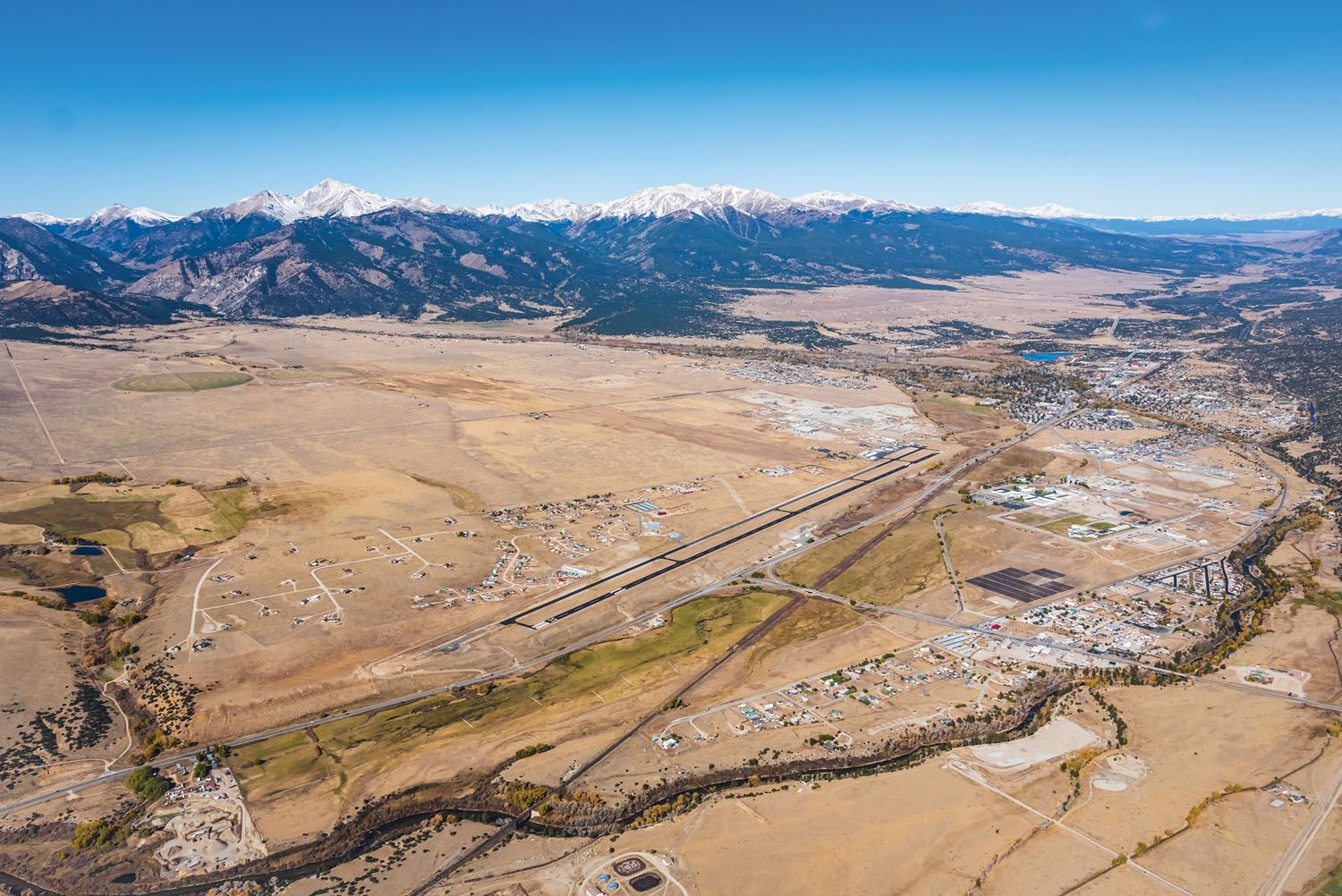
It was Eric’s first time landing a tailwheel in several months, and he did really well! We taxied to the FBO and were met by some of the best hospitality I have encountered—not to mention they recognized Woodstock in an instant. He’s a star! Courtesy car keys in hand, we ventured to a local restaurant and had a good meal.
When we returned to fly home, we found ourselves taking off behind a Cessna 120. I halted Eric as he was about to line up and wait on the runway because the 120 appeared to be struggling to get airborne and climb. It turns out he was building speed for a little pull-up at the end. It was not a very big pull-up, but it was a pull-up. Finally, it was Woodstock’s turn! Eric performed a static short-field takeoff. We were off in a thousand feet or less, before the runway even began to slope. Woody once again exceeded our expectations in the mountains. As we flew through the valley, we outclimbed and outpaced the 120. Well, Woodstock isn’t a Skywagon, but he sure is a step up from my old Cessna 150! I’m sure the 150 would have been outrun by the 120 we were outrunning. (At least, I recall my friend back in North Carolina would routinely outrun my 150 with his stock 140.) Gosh I love this GlaStar!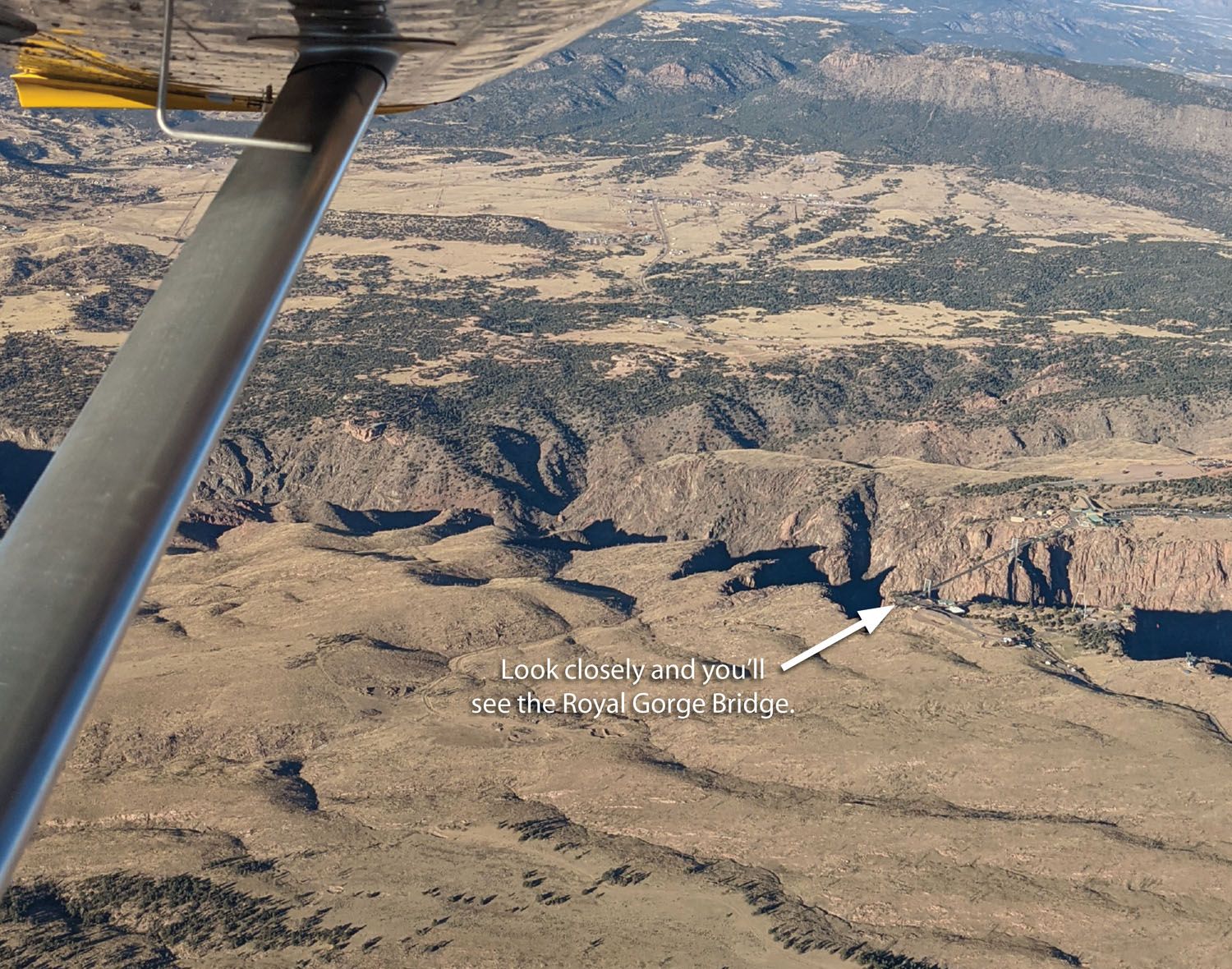
We took the scenic route home over the Royal Gorge Bridge in Fremont, Colorado, which is the highest suspension bridge in America. The large bubble side windows really prove their stuff in the mountains. The visibility is awesome; it feels like being in a helicopter! We were also cruising home at a blistering 124 KTAS and 134 knots over the ground. Eric and I are thoroughly enjoying the process of getting to know our airplane better in the mountains. For now, we are picking our days, keeping the load relatively light, and we are ecstatic with our little yellow airplane. Onward to more adventures! Oh, and don’t ignore it if your airspeed glass gets foggy. Trust me!
Photos: Amy White.

